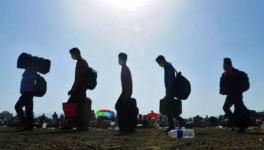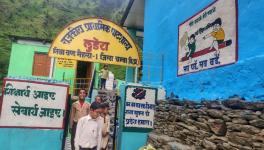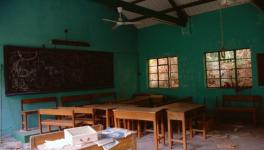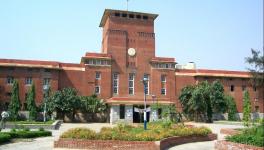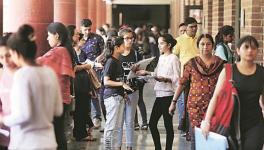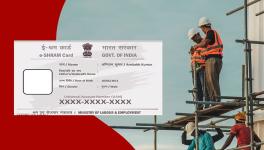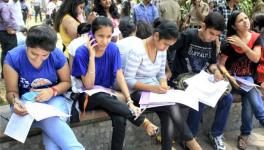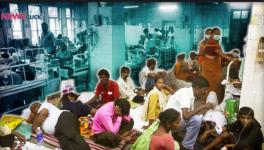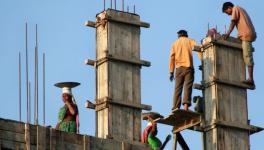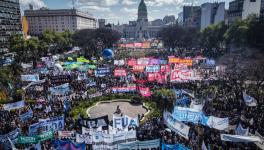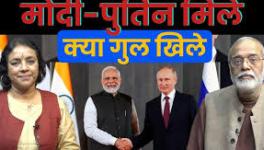Pandemic, Migration and the Education Crisis: How Capitalism Aggravated it
The painful pictures of migrants heading home must be haunting many people. The reality is that there is no correct estimation of how many workers migrate internally in India, given the precarity and the unavailability of jobs. According to a World Bank estimate, there are nearly 40 million internal migrants. The figure was echoed in another news report where the government also stated similar figures.
In its data on migrants, the 2011 Census put down 4,14,22,917 persons as migrants for reasons of work or employment. Of these massive approximations, states like Bihar have huge share. A report on Bihar in June said that “Government officials estimate that so far, around 32 lakh people have come back to the state”. The Uttar Pradesh government calculated that 21.69 lakh workers had returned to the state. One government agency estimated that there were 26 lakh stranded migrants, while the Centre told the Supreme Court that it had transported 97 lakh migrant workers.
In a nutshell, the Indian state has no inkling of the huge, unidentified and invisible workforce that runs the engine of its so-called high growth development model. It is also important to note that this indifference towards the vast mass of this work force is not sudden, but has evolved over a period of time and has been intrinsic to the model of development that Indian capitalism has embraced.
This vast mass of population, which walked thousands of miles and which has been forgotten due to public amnesia generated through war rhetoric and nationalism, has suffered on account of its children’s education as well. The pandemic has compounded their problems, not just because it has left millions without jobs and any bargaining power in the labour market, but also because their children will be deprived of one of the most fundamental requirements of life – a good education.
Concerns have been raised about the migration’s impact on education because it would lead to dropouts (more among girls than boys), further inaccessibility due to the digital divide and its psychological impact on children due to aggravated poverty, health and learning inaccessibilities. Additionally, in this abnormal situation (which the state and many intellectuals call the ‘new normal’), the elimination of a face-to-face interface between the teacher and student will fundamentally alter possibilities of producing a socially just and equitable imagination of society.
For instance, the socio-political, cultural and emotional dynamics that exist between the EWS and the non-EWS, sitting together in schools, would have unravelled. However, it will no longer be a possibility in this virtual classroom. The debate among students in a school inside and outside classrooms, the performative dimensions of students and teachers in the classroom or outside it or the possibilities of subversion through tiny acts of students during the process of schooling, will all be lost. Whatever argument is put forth by the online enthusiasts, dialogic dimensions are lost in apps or through online platforms of teaching and learning.
It is being repeatedly argued that migration has led to educational crisis. This is a fundamentally erroneous conclusion because it does not: firstly, tries to comprehend what creates this precarity in economy and secondly, how this precarity leads to this educational crisis. In other words, the educational crisis cannot be understood in a de-historicised manner that leads to looking at developments as ‘moments’ and thereby miss its historico-material roots and the systemic nature.
It is the same system that fails to guarantee a decent livelihood, housing, health and social security due to its logic of unabashed and deceitful wealth accumulation, which also denies education to children. This crisis in education could have been reduced to a great extent (not completely) if public education backed by the state would have existed. India’s educational universe is in a mess with tens of different kinds of public schools and a hundred varieties of private schools. The state never took a keen interest in establishing public education – at par with best existing schools in terms of infrastructure, pedagogical innovation, or providing the best possible working conditions to its teachers.
There is a general sense of elation among the corporate world and within the government about the online education system. While it opens up new possibilities of accumulation in an area which was not permitted earlier, it carries in its womb the possibility of the diminishing financial obligation of the state. In 2018, the online education market was worth Rs 39 billion, and the number is expected to be Rs 360.3 billion by 2024, as per a report in April 2020.
For an industry which was concerned about different kinds of recognitions and accreditations that might hamper its growth, a pandemic like the present is good news for them, because the state is gradually moving in the direction of online teaching. In any case, our state visionaries had pointed out way back in 2015 that “schools, colleges and universities as currently constituted will be redundant in 2035. Instead, we will have institutions of learning that are virtual/meta/open in character”.
In fact, unlike my concern above about a socially just and equitable education were tackled by it by saying that “there would be no school dropouts. All children would have access to quality and affordable education, independent of social, economic, geographic, physical and even mental constraints.”
The only answer to a crisis in education lies in its takeover by the state, which provides the best resources for its development. A child should not be worried about shifting from one place to another because a good school will be present in every nook and corner then. Developments models which do believe in a state-run education or health system are bound to falter in a situation of extreme crisis. However, the Capitalism of our times flourishes through state withdrawal from ensuring equal and just access to basic needs of people – from schools (Niti Aayog suggesting PPP models), health centres (National Health Policy, 2017), universities and so on.
The crisis that we have encountered is a systemic crisis of capitalism which has manifested in the education sector. It is a result of its mal-intent to serve private capital at the cost of public welfare. The response of the Indian state and the state governments to avoid the repetition of such a crisis lies in how it answers the initial question of whether they would ensure that all government schools are financed at par with Navodaya Vidyalayas, to ensure equality in access to each and every child.
The writer is Associate Professor in the Department of Sociology at South Asian University. The views are personal.
Get the latest reports & analysis with people's perspective on Protests, movements & deep analytical videos, discussions of the current affairs in your Telegram app. Subscribe to NewsClick's Telegram channel & get Real-Time updates on stories, as they get published on our website.









